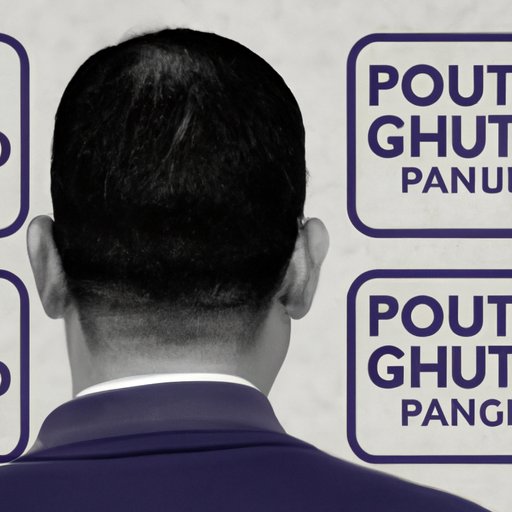Introduction
Guilt tripping is a manipulative tactic used by some individuals to control or manipulate another person’s behavior. The term “guilt tripping” was first coined in the 1960s, but it has since become an increasingly common phenomenon. It’s important to understand what guilt tripping is, why people use it, and how to deal with it in order to protect yourself from being manipulated.
The Psychology Behind Guilt Tripping
Understanding the psychology behind guilt tripping can help us better understand why people use this tactic. According to Dr. Daniel Bober, a clinical psychologist, “Guilt tripping is a form of emotional manipulation that seeks to exploit someone’s sense of guilt or shame in order to control or influence their behavior.” In other words, guilt trippers attempt to make the person they’re trying to manipulate feel guilty or ashamed so that they will do what the guilt tripper wants them to do.
Why People Use Guilt Trips
People use guilt trips for a variety of reasons. According to Dr. Brigitte L. Hardaway, a licensed clinical psychologist, “Some people use guilt trips because they are selfish or lack empathy. For example, they may be unable to recognize when someone else is feeling overwhelmed or overburdened and instead try to manipulate them into doing something that benefits the guilt tripper.” Other people may use guilt trips out of a sense of desperation or insecurity. They may be struggling to meet their own needs and feel like they have no other way to get what they want.
How to Recognize Guilt Trips
Recognizing guilt trips can be difficult because guilt trippers often use subtle tactics. According to Dr. Hardaway, “Common signs of guilt tripping include manipulating emotions, making unrealistic demands, playing the victim, and using passive-aggressive language.” Guilt trippers may also try to make the person they’re trying to manipulate feel guilty by accusing them of not caring or not doing enough.

Strategies for Dealing with Guilt Tripping
Once you’ve identified a guilt trip, it’s important to know how to respond appropriately. Here are some strategies for dealing with guilt tripping:
Identifying Guilt Trips
The first step in dealing with guilt tripping is recognizing it when it happens. Pay attention to the words and actions of the person who is trying to manipulate you. If they’re using emotionally manipulative language or trying to make you feel guilty for not doing something, then it’s likely that they’re attempting to guilt trip you.
Responding Appropriately
Once you’ve identified a guilt trip, it’s important to know how to respond appropriately. According to Dr. Hardaway, “One of the best strategies for dealing with guilt trips is to calmly and assertively set boundaries. This means telling the person who is trying to manipulate you that their behavior is not acceptable and that you will not tolerate it.” It’s also important to be firm and consistent in your response.
Setting Boundaries
In addition to responding assertively, it’s also important to set boundaries with the person who is trying to manipulate you. This means clearly communicating what behaviors are acceptable and what behaviors are not. Setting boundaries can help you protect yourself from further manipulation.
Pitfalls of Guilt Tripping
Although guilt tripping can be a useful tool for getting what you want, it can also be damaging if it’s used too often or in the wrong way. Here are some pitfalls of guilt tripping to be aware of:
How Guilt Tripping Can Become Harmful
When used too often or in the wrong way, guilt tripping can become harmful. According to Dr. Hardaway, “Guilt tripping can lead to feelings of resentment and powerlessness, which can cause long-term damage to relationships.” In addition, guilt tripping can lead to a breakdown in communication between two people, which can further damage the relationship.
How to Avoid Becoming a Guilt Tripper
If you find yourself using guilt trips too often, it’s important to take steps to change your behavior. According to Dr. Bober, “It’s important to practice self-awareness and be mindful of the consequences of using guilt trips. Instead of using guilt trips, focus on expressing your needs and feelings in an effective and respectful way.”
Conclusion
Guilt tripping is a manipulative tactic used by some individuals to control or manipulate another person’s behavior. It’s important to understand what guilt tripping is, why people use it, and how to respond to it in order to protect yourself from being manipulated. By understanding the psychology behind guilt tripping and learning strategies for dealing with it, you can empower yourself to stand up to guilt trippers and protect yourself from being manipulated.
(Note: Is this article not meeting your expectations? Do you have knowledge or insights to share? Unlock new opportunities and expand your reach by joining our authors team. Click Registration to join us and share your expertise with our readers.)
